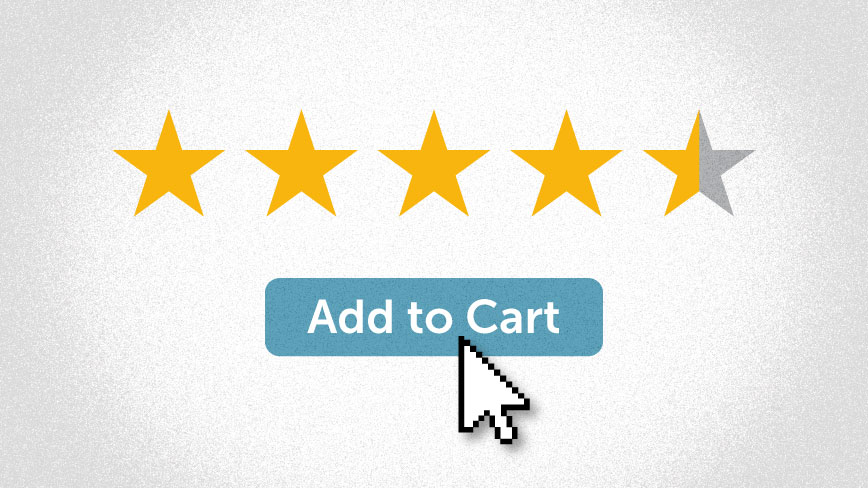Customer reviews have grown into a digital marketing priority for some brands because of their ability to create feedback loops that produce better offerings and happier customers.
What do you do if a customer leaves a bad review? With the rise of the internet in the late 1990s, brands suddenly had one of the first open tests of public sentiment available to them: the customer review. During that period, it was both a blessing and a curse. On one hand, reviews posed a trial by fire because public reaction had the potential of being unpredictable. On the other, brands that were well-received online achieved an immediate distinguishing factor, literally positioning them above their competitors and earning them more sales.
These benefits and risks continue in today’s current online environment, where both the quantity and visibility of reviews has increased exponentially. Reviews displayed on search engine results and review sites give potential customers equal access to others’ opinions, both positive and negative. What these people see can often sway their purchase decision, offering a critical resource for many consumers, 82% of whom check reviews “at least sometimes” before making an initial buy.
Because of the benefits reviews can offer and the influence they can have on the consumer’s path to purchase, some brands and marketers look at reviews as a means to inform strategy, foster customer relationships, and achieve digital marketing goals.
Brand Reviews Serve as Influence on the Path to Purchase
To the public, the most important role reviews fulfill is to act like a word-of-mouth recommendation…or a warning. Generally, reviews are seen as unbiased, honest opinions from someone who has firsthand experience with the product or service. In fact, 88% of people say they trust reviews just as much as personal recommendations.
Customer reviews have become a major influencer on shoppers and buyers, mostly as a tool used to research before committing to a purchase. The experience reviewers have with a product or service can provide additional information or insight that someone would not get (or trust) from the company themselves. People consider reviews from other consumers almost 12 times more trustworthy than a product description provided by the company.
Therefore, having reviews serves as a marker of trust for many brands and products, lifting sales by an average of 18% across the board compared to products that lack reviews. In turn, brands can also use reviews as feedback to improve a product or service, creating feedback loops that ideally produce better offerings and happier customers.
Reviews Boost Visibility Online
As more sites feature reviews and ratings, many businesses notice the positive impact a review can have in terms of their online visibility. For one, reviews serve as a simple, standardized form of user-generated content, encouraging traffic as people browse and recheck reviews over time.
Reviews can also serve as a fairly hefty ranking signal for search engines, meaning in a comparison between two brands with nearly equal ranking prominence, the one with a higher number of quality reviews will get displayed first, earning more clicks.
Consumers Turn to Social Media in Lieu of Formal Review
Some brands have discovered that the same online reputation management aspects that help foster good reviews can also help them boost their reputation across social media. Roughly 10% of people “almost always” post online reviews, while 40% have shared opinions on brands and products over social media.
It’s now easier than ever to connect directly with a brand and offer feedback, especially given the ability to take and share photos that support your claim with minimal effort. In this way, social media mentions can serve as quasi-reviews for both positive and negative commentary.
However, there can be stronger motivations to posting negative reviews on social media – such as warning others, getting refunded, fixing the problem, or simply wanting an apology – but overall most customers who complain are expecting to receive a response. Negative reviews can provide brands with an opportunity to right their wrongs when a customer is not satisfied with their interaction or purchase.
Luckily, when brands handle these situations in a timely manner, they can win back customers and turn negative experiences into positive ones. Recent research shows 70% of respondents said they would do business with a company again if their customer service issue is resolved in their favor.
Leaving a comment or review can be as easy as the push of a button – and brands have the opportunity to use both positive and negative reviews to their advantage. As brands learn to boost their visibility, enhance their attractiveness to new customers, and resolve criticisms, they can create feedback loops that help fuel their overall success and build stronger customer relationships.

